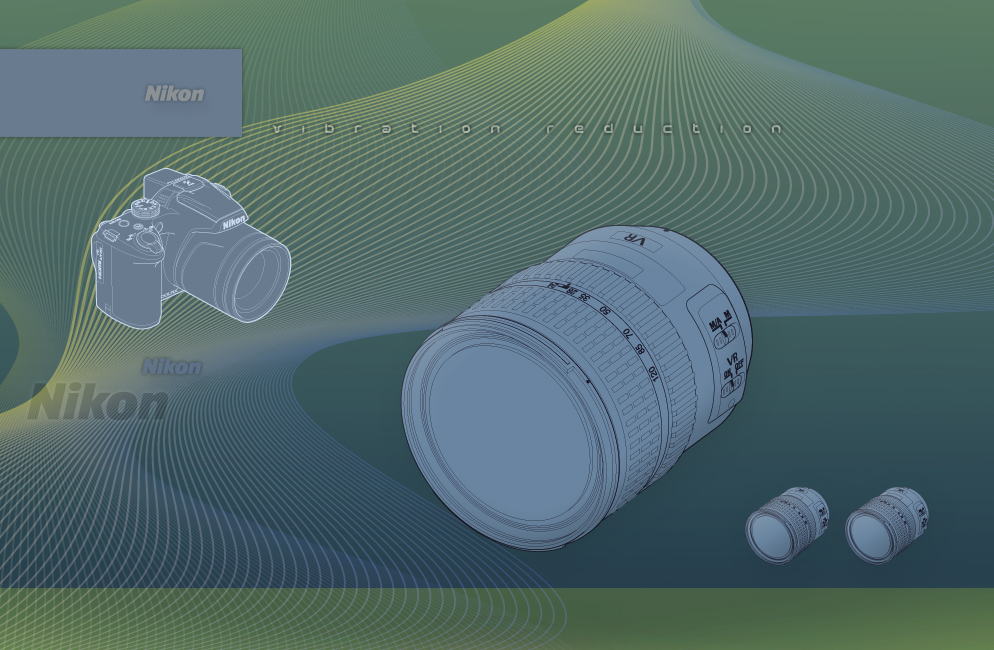What Does Vr Mean On A Camera


Intermediate
Vibration Reduction

Vibration Reduction (VR) is an image stabilization technology that minimizes blur acquired past camera shake. Using a VR NIKKOR lens tin upshot in precipitous images in low low-cal, under windy weather or when using a physically big NIKKOR lens.
Vibration Reduction (VR) is an image stabilization technology that minimizes mistiness caused by photographic camera milkshake. Using a VR NIKKOR lens tin can result in sharp images in low lite, nether windy atmospheric condition or when using a physically large NIKKOR lens, at up to four stops slower with a VR lens than a non-VR lens. This number of f/stops is based on CIPA standards and will alter depending upon the specific lens. The value is achieved when a DX-format compatible lens is attached to a DX-format D-SLR photographic camera and zoom lenses are ready at the maximum telephoto position or when an FX-format compatible lens is attached to an FX-format D-SLR camera and zoom lenses are set at the maximum telephoto position.
Nikon VR originates in the lens, not in the paradigm sensor, which means that algorithms optimized to an individual lens are applied. Another reward of lens-based VR is that a dissever algorithm confirms the stabilization effect when you press the shutter release push halfway, giving you the freedom to compose your paradigm more hands. The system can too observe the use of a tripod, recognize panning―an case in which you wouldn't want the lens to compensate for movement―and address the specific shake caused by the ongoing vibration patterns produced when shooting from a moving vehicle.
Nikon VR lenses utilize two angular velocity sensors, one that detects vertical movement (pitch), the other, horizontal movement (yaw), with diagonal motion handled past both sensors working together. The sensors ship angular velocity data to a microcomputer in the lens, which determines how much compensation is needed to offset the camera'due south shake and sends that data to a duo of voice scroll motors that motility selected lens elements to compensate for the detected motion.
Applied Uses of VR
What does this hateful in applied terms? A rock-steady camera is essential to critical epitome sharpness, and Nikon'due south exclusive Vibration Reduction technology offers the perfect solution for reducing the epitome mistiness caused by camera milk shake. Information technology provides you lot with upwardly to four stops of "hand-holdability," delivering dramatically sharper images in a wide range of conditions.
Non all anti-milkshake technologies are the same. The in-camera anti-shake technology used by some manufacturers relies on a process that actually shifts the image sensor, and its functioning do good is generally agreed to be express to almost ane-and-half to 2 stops. For Nikon photographers, an additional two stops of VR functioning capability can easily exist the departure between a blurry picture and a beautiful sharp one.
But the benefits of Nikon VR aren't limited to shutter speeds. Consider shooting on an overcast day at a medium ISO where greater depth-of-field might be desirable. Because using a Nikon VR lens means you've got up to iv extra stops available, you can cull an discontinuity of f/8 rather than f/two―and in that location'southward your depth-of-field. And having up to 4 stops to work with also offers the possibility of shooting at lower ISO settings, thus maximizing image quality.
Click here for more on Nikon's VR engineering science.
This Article Goes Great With These Products
Source: https://www.nikonusa.com/en/learn-and-explore/a/products-and-innovation/vibration-reduction.html#:~:text=Vibration%20Reduction%20(VR)%20is%20an,a%20physically%20large%20NIKKOR%20lens.
Posted by: swisherequat1983.blogspot.com

0 Response to "What Does Vr Mean On A Camera"
Post a Comment